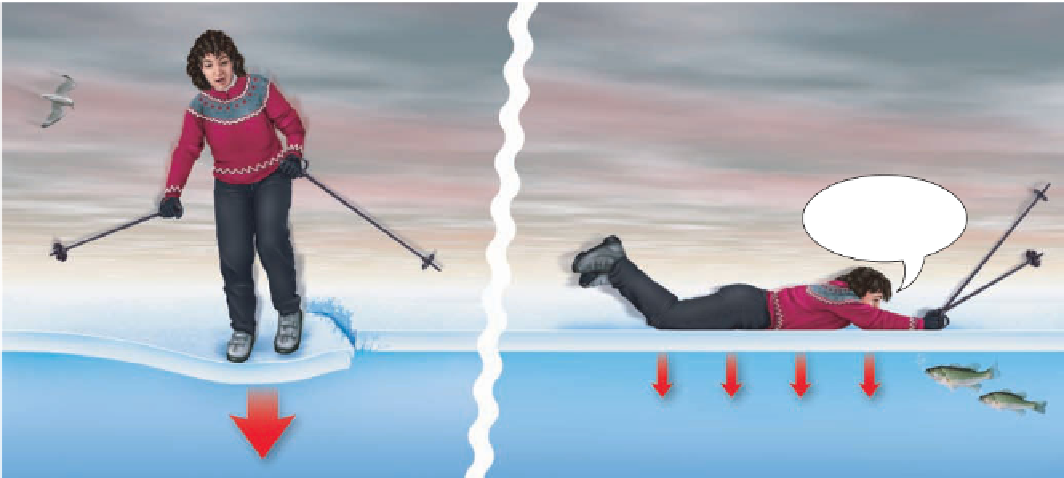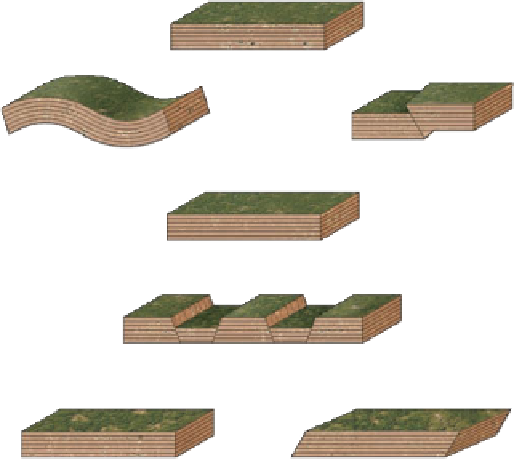Geology Reference
In-Depth Information
◗
Figure 10.2
Stress and Strain Exerted on an Ice-Covered Pond
....think I'd better
belly squirm back
to shore!
a
The woman weighs 65 kg (6500 g). Her weight is imparted
to the ice through her feet, which have a contact area of
120 cm
2
. The stress she exerts on the ice (6500/120 cm
2
) is
54 g/cm
2
. This is suffi cient stress to cause the ice to crack.
b
To avoid plunging into the freezing water, the woman lays out fl at,
thereby decreasing the stress she exerts on the ice. Her weight remains
the same, but her contact area with the ice is 3150 cm
2
, so the stress
is only about 2 g/cm
2
(6500 g/3150 cm
2
), which is well below the
threshold needed to crack the ice.
The ice's internal strength resists the stress unless the stress
is too great, in which case the ice may bend or crack as it
is strained (deformed) (Figure 10.2). To avoid breaking
through the ice, the person may lie down; this does not re-
duce the weight of the person on the ice, but it does dis-
tribute it over a larger area, thus reducing the stress per
unit area.
Although stress is force per unit area, it comes in
three varieties:
compression
,
tension
, and
shear
, depending on the direction of the
applied forces. In
compression
, rocks or any
other object are squeezed or compressed by
forces directed toward one another along the
same line, as when you squeeze a rubber ball
in your hand. Rock layers in compression tend
to be shortened in the direction of stress by
either folding or fracturing (
shape when the deforming forces are relaxed. In Figure 10.2,
the ice on the pond may bend under a person's weight, but
return to its original shape once the person leaves. As you
might expect, rocks are not very elastic, but Earth's crust
behaves elastically when loaded by glacial ice and depressed
into the mantle.
As stress is applied, rocks respond fi rst by elastic strain,
but when strained beyond their elastic limit, they undergo
◗
Figure 10.3
Stress and Possible Types of Resulting Deformation
Figure 10.3a).
Tension
results from forces acting along the
same line, but in opposite directions. Tension
tends to lengthen rocks or pull them apart
(Figure 10.3b). Incidentally, rocks are much
stronger in compression than they are in ten-
sion. In
shear stress
, forces act parallel to one
another, but in opposite directions, resulting
in deformation by displacement along closely
spaced planes (Figure 10.3c).
◗
Compression causes shortening of rock layers by folding or faulting.
a
Tension lengthens rock layers and causes faulting.
b
Geologists characterize strain as
elastic strain
if deformed rocks return to their original
Shear stress causes deformation by displacement along closely spaced planes.
c


























Search WWH ::

Custom Search